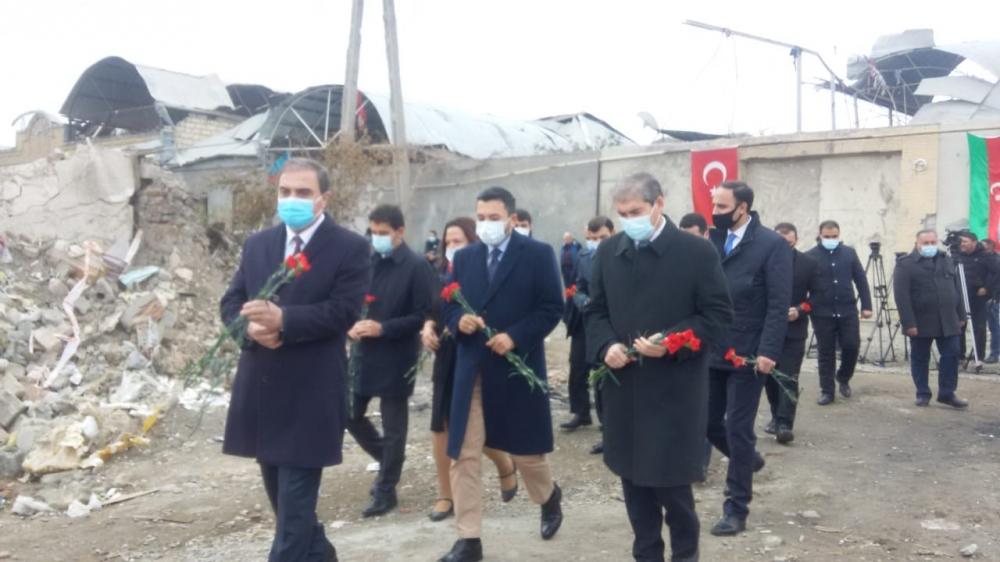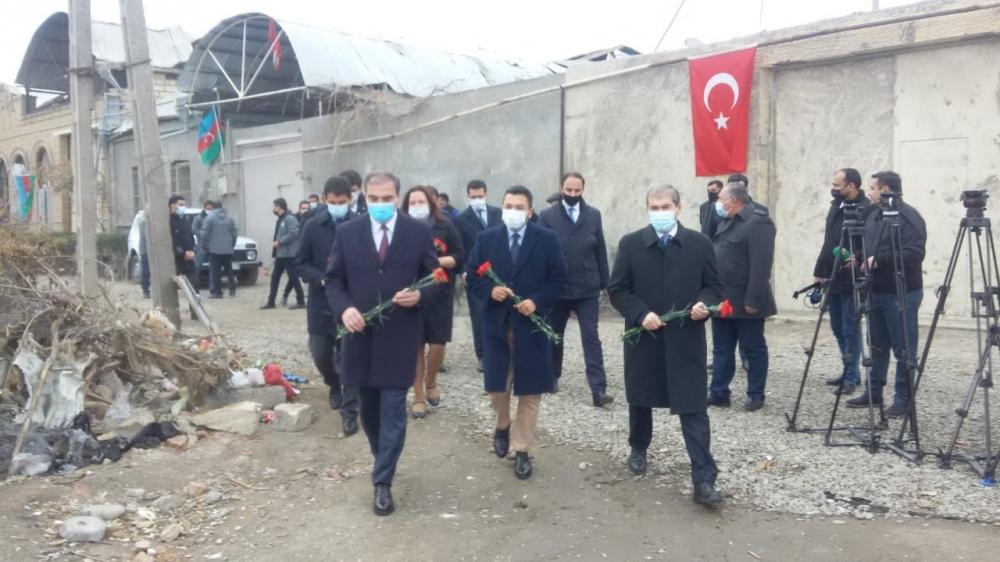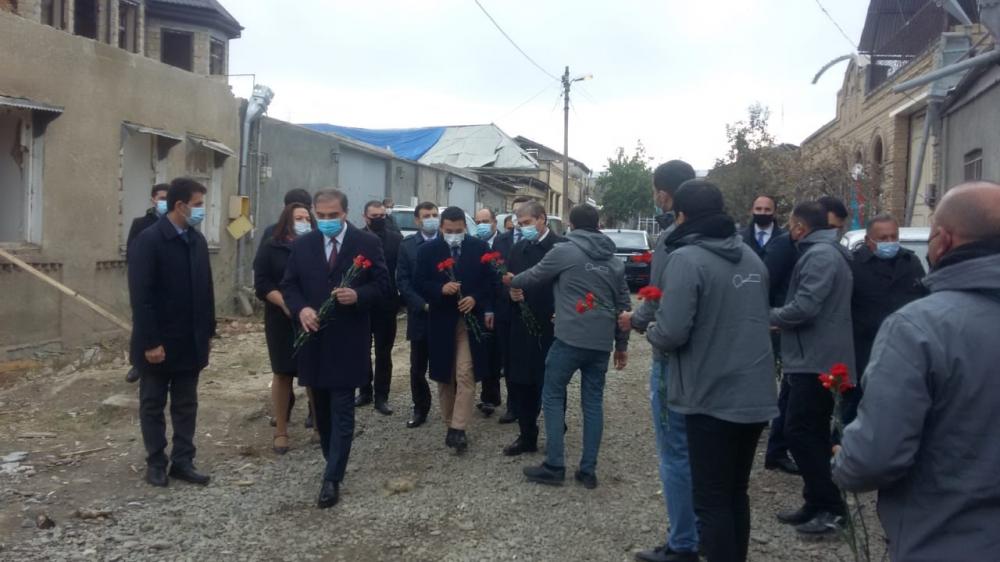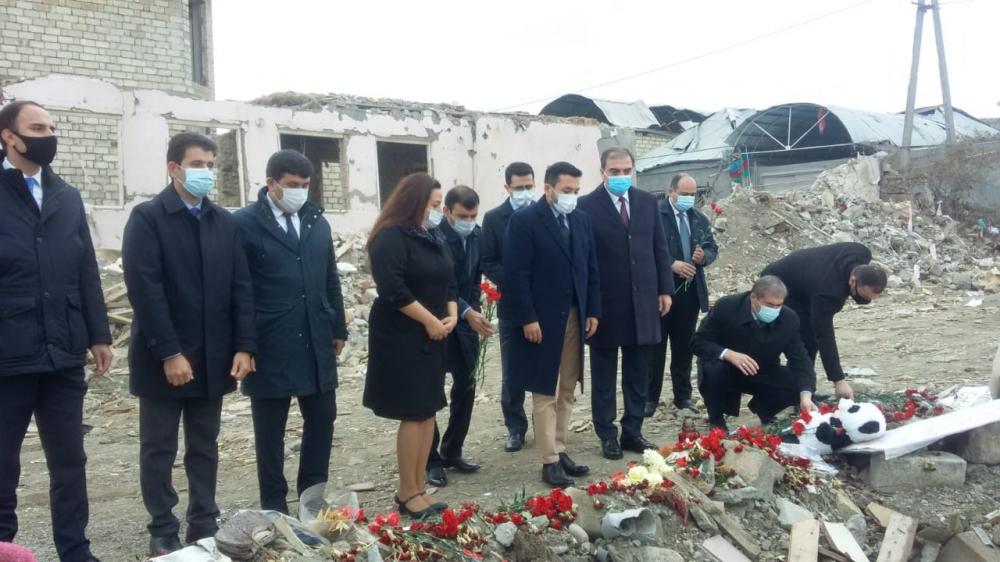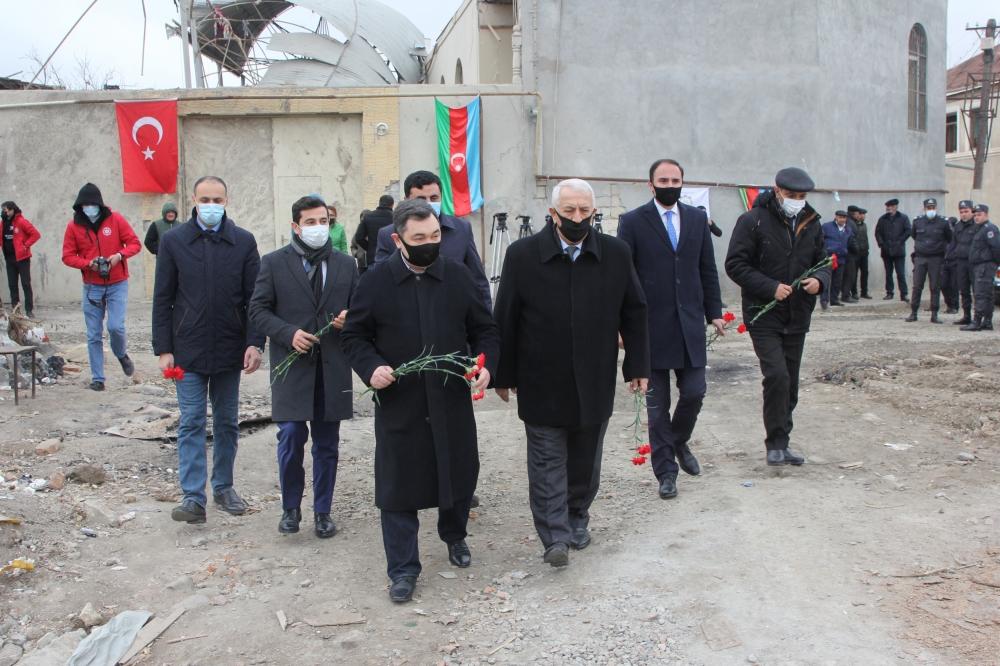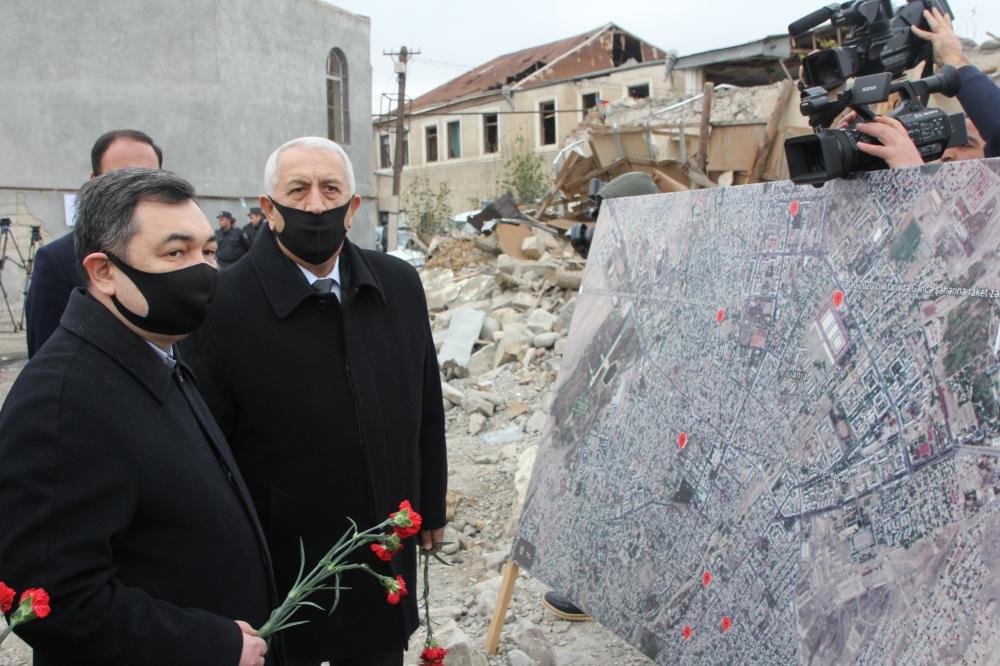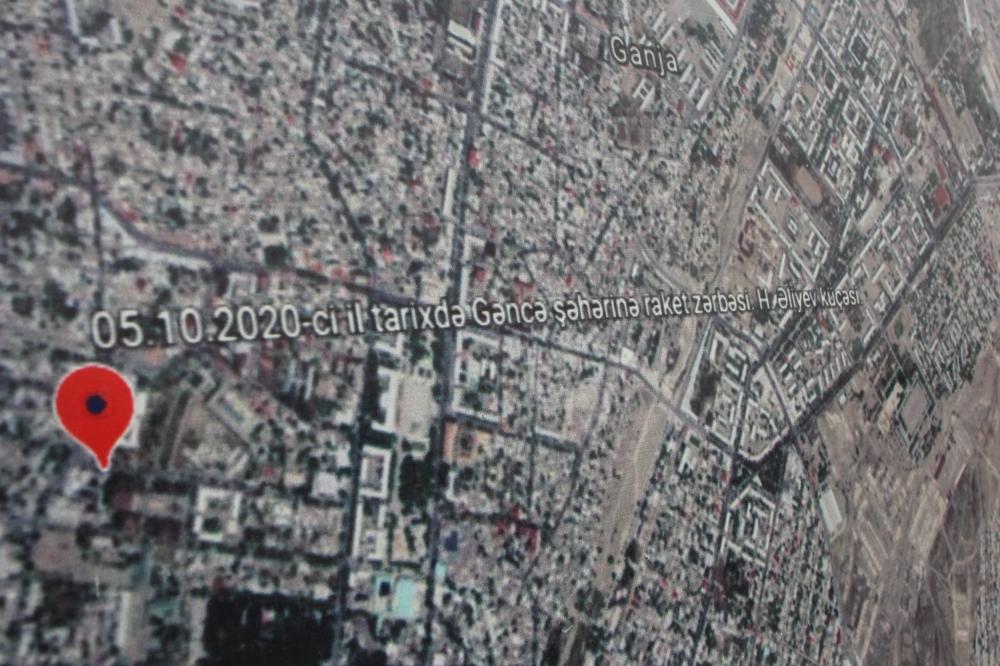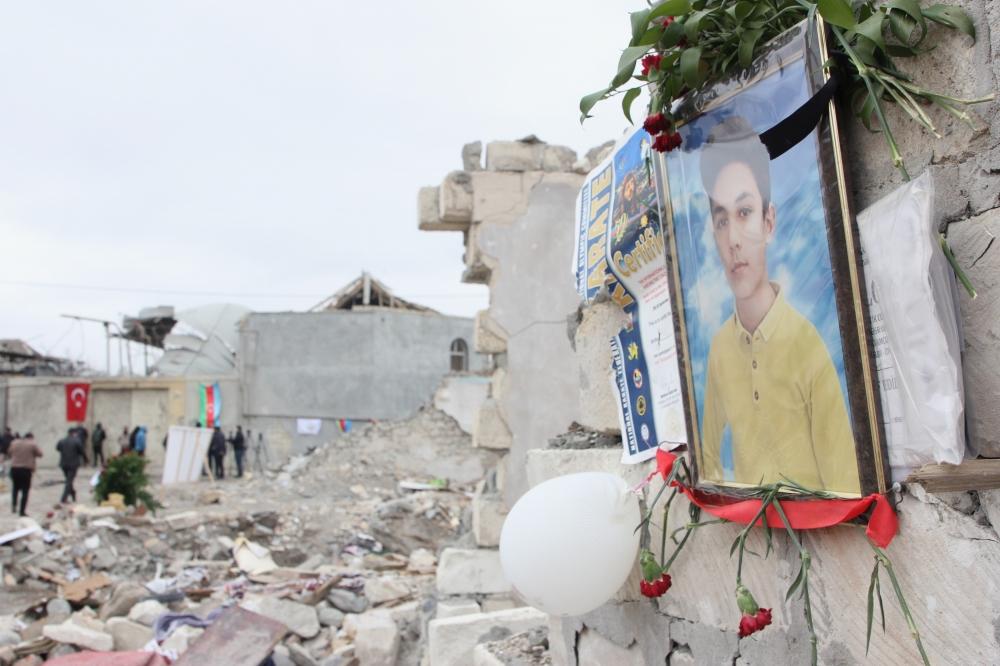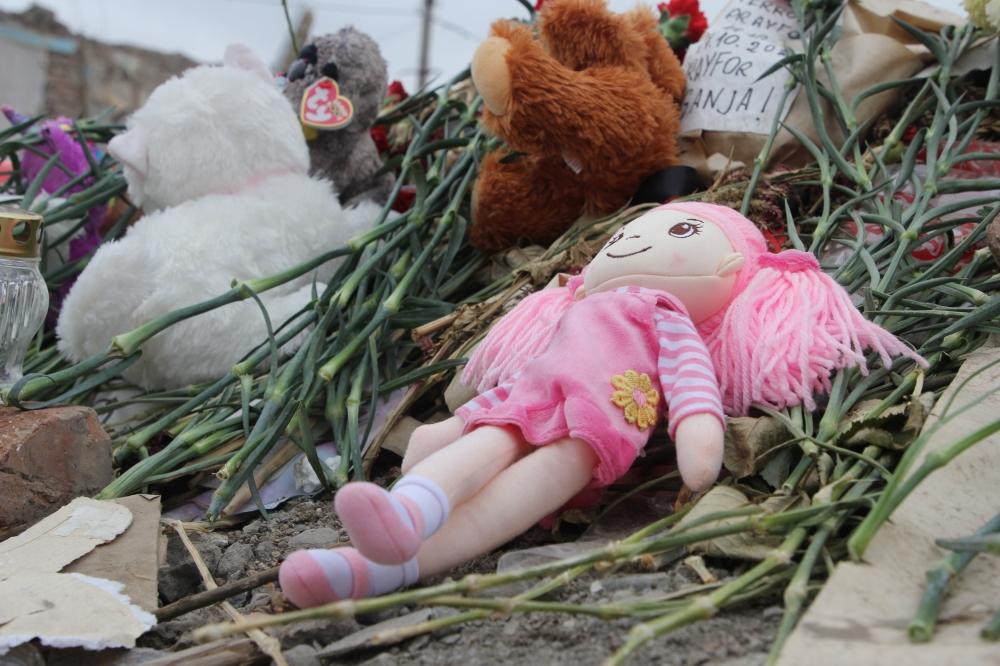Int’l delegations visit Armenian war crime scene in Ganja
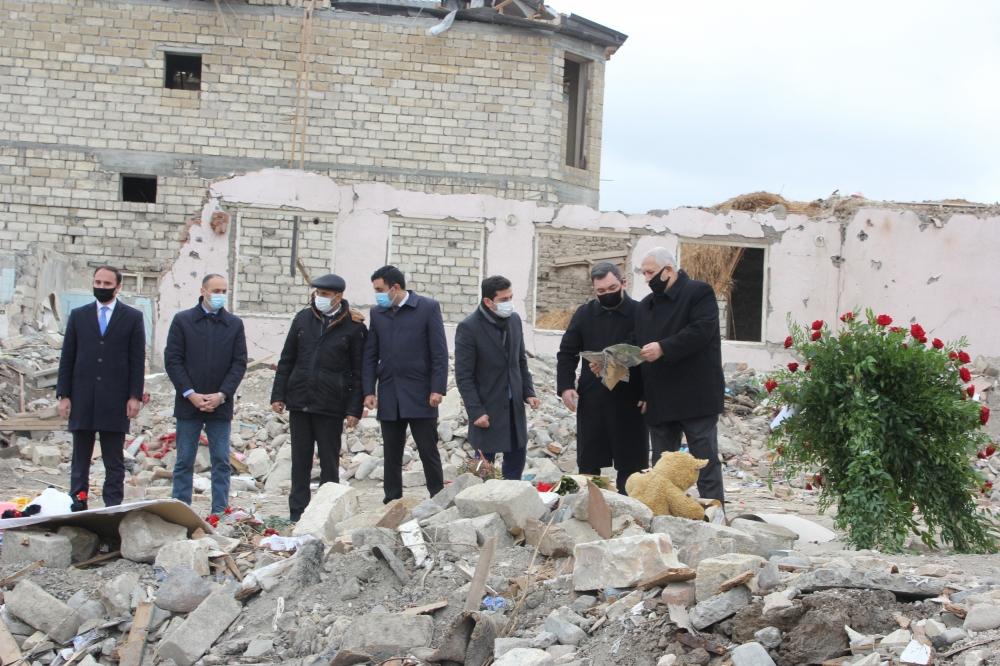
By Ayya Lmahamad
International delegations have visited the scene of war crimes committed by the Armenian armed forces in Ganja city.
On November 18 and 19, delegations led by the presidents of the Youth Forum of the Organization of Islamic Cooperation and the International Turkic Academy arrived in Ganja to visit the scenes of missile attacks launched by the Armenian armed forces, Azertag reported.
It should be noted that the visits aim to get acquainted with the Armenian war crimes, missile attacks against civilians in Ganja, the second largest city of Azerbaijan, which is located far from the conflict zone.
The delegations were briefed that Azerbaijani civilians and residential settlements were subjected to heavy artillery fire by the Armenian armed forces, which is a gross violation of international law's norms and principles, the 1949 Geneva Conventions and their Additional Protocols, and the Moscow agreement on a humanitarian ceasefire.
Moreover, it was underlined that as a result of ballistic missile attacks deliberately fired by the Armenian armed forces on October 11 and 17 on Ganja city, about 30 civilians, including 1 infant, 5 children and 10 women were killed and more than 90 people were injured.
Earlier it was reported that journalists in Azerbaijan’s Fuzuli region, liberated from the Armenian occupation, were shown the wreckage of the Tochka-U missile fired by the Armenian armed forces at the populated areas of Azerbaijan. It was noted that this was a 9M79 missile of the Tochka-U system, with a flight range of a maximum of 120 km at an altitude of 20 meters from the designed target for 14,500 fragments, the radius of which is 2-3 hectares.
The clashes between Armenia and Azerbaijan resumed after Armenia launched large-scale attacks on Azerbaijani forces and civilians on September 27. Armenia has been targeting Azerbaijan’s densely populated areas and infrastructure projects. Ninety-four civilians were killed, 414 were injured in Armenia's heavy artillery attacks during 44 days. In addition, 3,410 houses and 120 multi-apartment residential buildings, as well as 512 civilian facilities were severely damaged.
The 44-day war ended with the Russian brokered peace deal signed on November 10 by the Azerbaijani, Russian and Armenian leaders. The peace agreement became effective on November 10 and envisages the de-occupation of Azerbaijan’s Kalbajar region by November 25, Aghdam region by November 20 and Lachin region by December 1. In line with the deal, Azerbaijani IDPs are to return to Nagorno-Karabakh and seven adjacent regions under the control of the United Nations High Commissioner for Refugees.
---
Ayya Lmahamad is AzerNews’ staff journalist, follow her on Twitter: @AyyaLmahamad
Follow us on Twitter @AzerNewsAz

